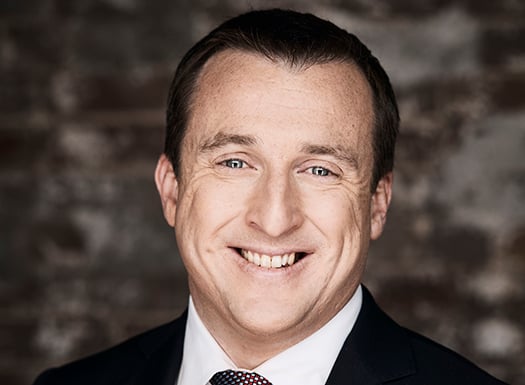When Nine Entertainment Co. took over the Macquarie Radio Network a couple of years ago, it embarked on a mission to restore more “live and local” content and to effect “generational change.”
Now, with the exception of nights and overnights, which are networked, all their weekday shows are live and local in each market.
With that, and an injection of younger talent, “We’ve had an 11 per cent growth in the 25 – 54s in the last six months alone,” says Mr Malone. And last Thursday, he was able to announce a corresponding (perhaps coincidental) 11 per cent lift in profit for the first half of the 2021 -2022 financial year.
I spoke with him on Friday.
radioinfo: An 11 per cent gain in revenue compared to the same period last year… you must be happy with that…
Malone: Yes, really, really, happy, Peter. I think when you rewind to the acquisition of the minorities of Macquarie Media, and then we took over at Nine, and then COVID hit. And if you look at the way that we’ve managed to evolve programming, pursuing a live and local strategy. And we’re really setting about to build talkback radio for the new generation as well as being loyal to existing listeners.
We did a lot of heavy lifting on rightsizing the business from a cost point of view. And then, of course, it was a matter of really waiting for some clear air in the revenue market. We were into our third financial year impacted by COVID, and we were just getting a run of steam towards the end of FY 1 – and then we had lockdowns again in Sydney and Melbourne. And we’re pretty heavily leveraged against Sydney and Melbourne given 2GB and 3AW market leaders in those cities. And we’re also pretty heavily leveraged against SMEs, given the nature of talkback radio clients.
So, to then record results (that show) half one EBIT (Earnings Before Interest and Tax) are up 120 per cent was really gratifying and a reinforcement on the strategy around audience. There’s always a bit of a lag for revenue on audience, but we’re starting to see that revenue build, client counts are up, the size of the briefings are up, and we’re starting to get some clear air away from some of those impacts of COVID. Bookings are picking up very strongly for March and April and beyond.
radioinfo: To what extent do you think, was that leap in revenue and audiences, affected surge in COVID cases brought on by the Delta and Omicron variants, driving listeners to seek more news and talk?
Malone: Well, revenue had, in fact, an inverse relationship to Covid because we were all predicting a market to recover in the tune of about 40 per cent in Q1. And really, it was closer to 15 per cent in Q1. So, it was a much, much smaller revenue growth because of COVID. In fact, we succeeded in spite of COVID from a revenue point of view, and we’ve been gaining share in that market the whole way through.
Audience wise, there’s no doubt, you know, Covid has had an impact in terms of people wanting the latest news and information that’s relevant to them. But you know, there’s always something in your city that people are interested in, so be it Covid or state elections or federal elections or rugby league or AFL. And that’s the unique point of difference. That’s a unique sales proposition and market is that we are the place people come to for their latest news, sport, weather, information, entertainment, opinion, traffic. All of those things are really important to people and that’s that’s our product.
radioinfo: Even now, as our fear of Covid subsides we have major unrest in Europe and China breathing down our necks to worry about, would you say that bad news of this kind is good for the Talk genre?
Malone: I wouldn’t say it’s good for the genre. I’d say, what’s actually really humbling and gratifying at the same time, is that when people want that information, they go to talk radio. And so that’s a real indication of reinforcement of the content genre that’s been going on years before we became custodians of the radio stations. And hopefully years after. But people turn to talk radio and the Nine Radio stations for those moments of truth – bushfires or floods or wars or elections because they know they’re going to get a trusted source of news. They’re going to get great opinion, great information, it’s going to be relevant to them. And so whether it be a significant story or whether it be a light hearted companionship, they’ll continue to turn to talk radio for those reasons.
radioinfo: If people are turning to you for news, how important is it for your stations to tell the truth and maintain their trust amid so much misinformation being pushed through social media?
Malone: The relationship with the listener, the trust they place in us, is at the heart of everything we do. And, obviously, there are legal and regulatory requirements as well. But over and above and beyond that, you know, we take ‘trust’ really seriously because of the place that we occupy in people’s homes, cars, sheds, bathrooms, bedrooms and they’re turning to us.
radioinfo: When you took over Macquarie a couple of years ago, it was on a platform of generational change. Has mission been accomplished?
Malone: Definitely. We’ve had 11 per cent growth in the 25 – 54s in the last six months alone.
We’re also having a conversation with advertisers more broadly about the power of a super consumer. And that’s the age group of 55 to 65, who have an extraordinary amount of discretionary spend, and at the moment, are not really considered by advertisers. So, there’s a dual strategy there to, not only broaden out our audience demographic, but also to work with advertisers to so that they can understand the power and the reach of some of the talk radio audience.
radioinfo: Outside of your AM, online and DAB+ radio outlets what do you see as the main opportunities for growth?
Malone: We don’t talk about ourselves as AM radio anymore. We’re Talk Radio. We had, eight million listeners on our digital platforms in the first half of FY22. That’s up 45 per cent on the previous six months. We had 63 million streams in the first six months of this financial year. I’ll let you do the comparison with the other networks, but we are so far ahead in terms of transitioning audience from linear to digital devices.
And again, it’s the strength of the content genre, live and local, and we want to maintain the ubiquity of radio. So, you’ve got to be available anywhere, any time on any device.

Peter Saxon

